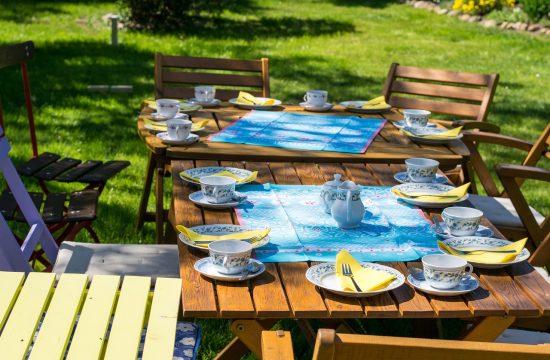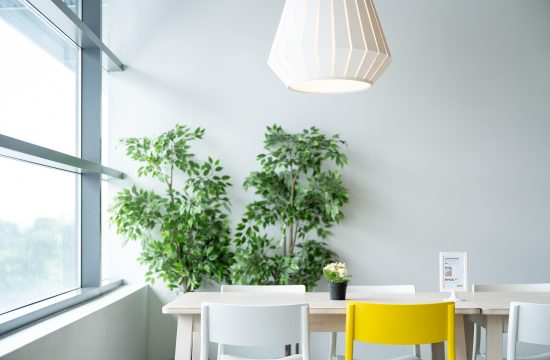Thomas Russell
KUALA LUMPUR, Malaysia — As they look to better compete in the global marketplace,
Malaysian furniture makers have moved some production to mainland China.
In some ways, this mirrors what many Taiwanese furniture companies did in the 1990s when they shifted production to China.
Like the Taiwanese, Malaysian companies have learned that China represents not only cheaper labor, but also greater capacity, more consistent skill levels, lower raw materials costs and greater availability of raw materials.
A prime example is Rubelli, a Malaysia-based leather manufacturer with plants in Malaysia and China. In late 2004, the company built a factory from the ground up in Jiaxing, southwest of Shanghai.
By this spring, the 500-employee factory was turning out 200 containers a month, said CEO Stephen Wong. By the time it completes an expansion at the end of this year, that capacity could increase to 500. Currently, its Malaysia plants also produce 200 containers per month.
While Rubelli continues to manufacture in Malaysia, Wong said China’s lower operating costs are helping the company sharpen its price points. In that respect, he said, China remains a key to growth.
“We want to continue what we do and we want to expand,” Wong said. “The only way to expand is to do it in a country with low labor costs. We are just following where the wind blows.”
He noted that a furniture factory worker in Jiaxing makes about $150 per month, including overtime and other incentives, compared with a high of $330 in Malaysia. Wong also said that other factors — such as the cost of utilities and raw materials and efficiencies created through higher-capacity factories — also make production cheaper in China.
For retailers, this can mean lower-priced goods. Wong estimated that the lower costs can cut wholesale prices by 10% or more. A leather sofa and loveseat Rubelli produces in China costs $450 wholesale, and would cost $650 if made in Malaysia, he said.
The production shift also applies to the Malaysian city-state of Singapore. Singapore has a host of furniture company headquarters operations that handle sales, marketing and other duties while manufacturing in Malaysia and China.
Lorenzo is a Singapore-based leather upholstery producer with plants in both countries. It has a 60,000-square-foot, 458-worker factory in Malaysia that makes 1,200 sofa sets per month. About four years ago, it added two plants in Jiang Su that together employ 637 workers and produce a combined 150 containers per month of sofas and wood furniture.
Lorenzo principal James Goh said the company began the move in 1998, when it started production in a leased facility. Over the years, he said, lower labor and raw materials costs in China have helped Lorenzo expand its line to include a greater mix of products at lower to medium price points.
Eurosa Furniture is another Singapore-based company with plants in both countries. It has had a 300,000-plus-square-foot factory in Kushan, China, for 10 years that makes about 100 containers a month of leather chairs, wood bedroom and other case goods. Its factory in Kuala Lumpur, meanwhile, has a capacity of 40 to 50 containers per month.
Company Vice President Jeffrey Yong said having manufacturing in China makes sense because of the country’s abundance of labor, raw materials and other supplies.
“One of the key advantages is we can use different species of timber and supporting materials instead of only rubberwood in Malaysia,” he said. “This will help to provide better competitive edges in the medium-high end furniture market.”
Yong said the cheap resources don’t guarantee success in China, however. He said much depends on how the plant is designed and run.
But he also noted that the labor force often is more reliable in China than in Malaysia. People in China, he said, are hungry for steady, consistent work, while many laborers in Malaysia come from places like Bangla-desh and Sri Lanka on temporary work permits. These people have to be replaced after they return home. Language barriers also make it difficult to train and communicate with these temporary workers.
“This is an unforeseen and hidden cost,” Yong said.
China, he added, also seems to have more skilled carpenters and craftsmen than Malaysia.
Craftsmanship is a key reason that Malaysian-based occasional and accent furniture specialist Green Leaf Furniture turned to China. It has marketing and administrative offices in Malaysia, but does its manufacturing in a 130,000-square-foot, 400-worker factory in Shenzhen that produces mostly handcarved and hand-painted chests, consoles, tables, bars and vanity sinks.
A Green Leaf official said the Chinese generally do better at the intricate work. While some of the hand painting is done in Malaysia, he said labor shortages there make it difficult to produce the level of quality its customers expect on a consistent basis.
In August 2012, metal bed and dining room furniture producer Pipesway Furniture set up a 130,000-square-foot factory in Guangzhou that employs 150 workers and has a capacity of 60 containers a month.
Managing Director Jason Lim said Pipesway needed to expand after its Malaysia factory reached capacity. It looked to China partly because of the ample supply of skilled workers. While he believes the skill levels aren’t much different between China and Malaysia, the said China has a more consistent supply of workers that helps avoid production delays.
Other factors influencing the move to China included ample supplies of raw materials such as steel, and lower labor costs — factors help reduce prices by about 10%, Lim said. More importantly, they help provide a consistent level of quality that is similar to, if not better than, Malaysian-made goods.










